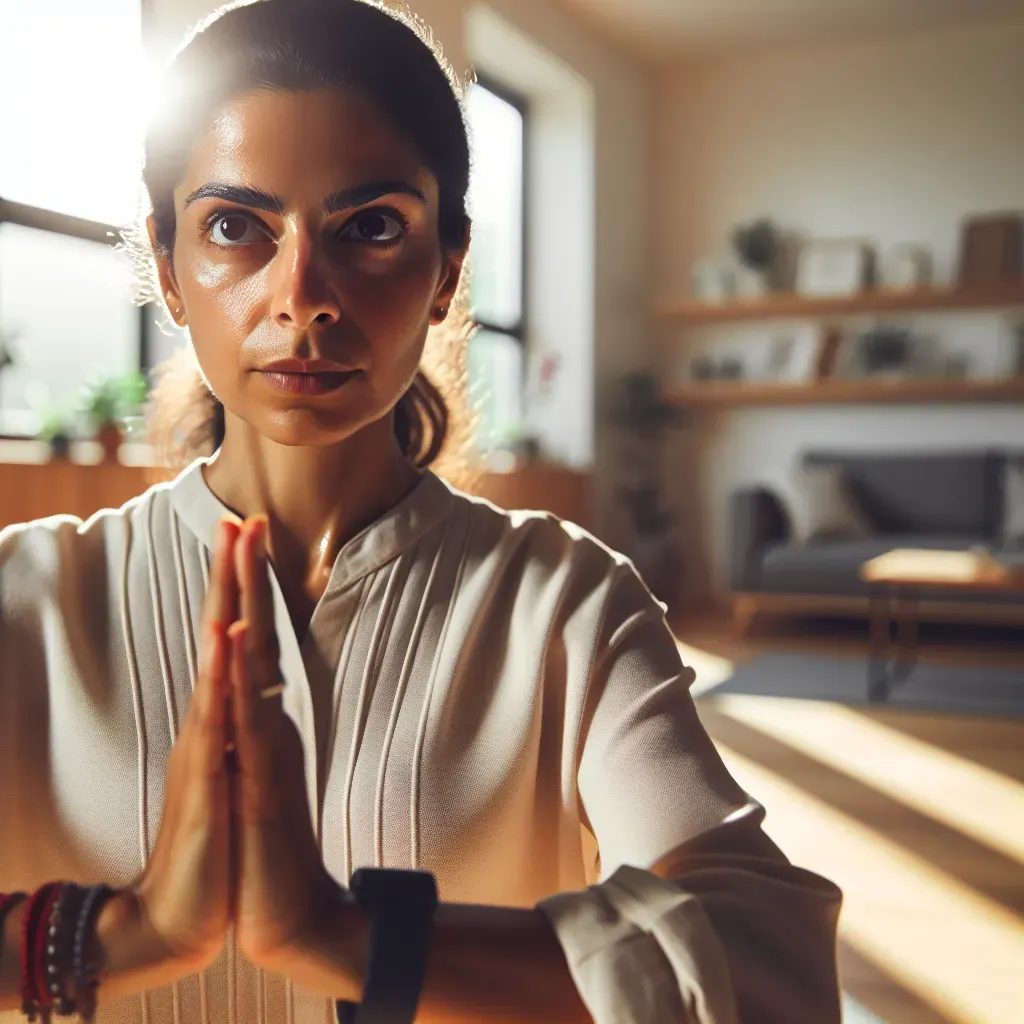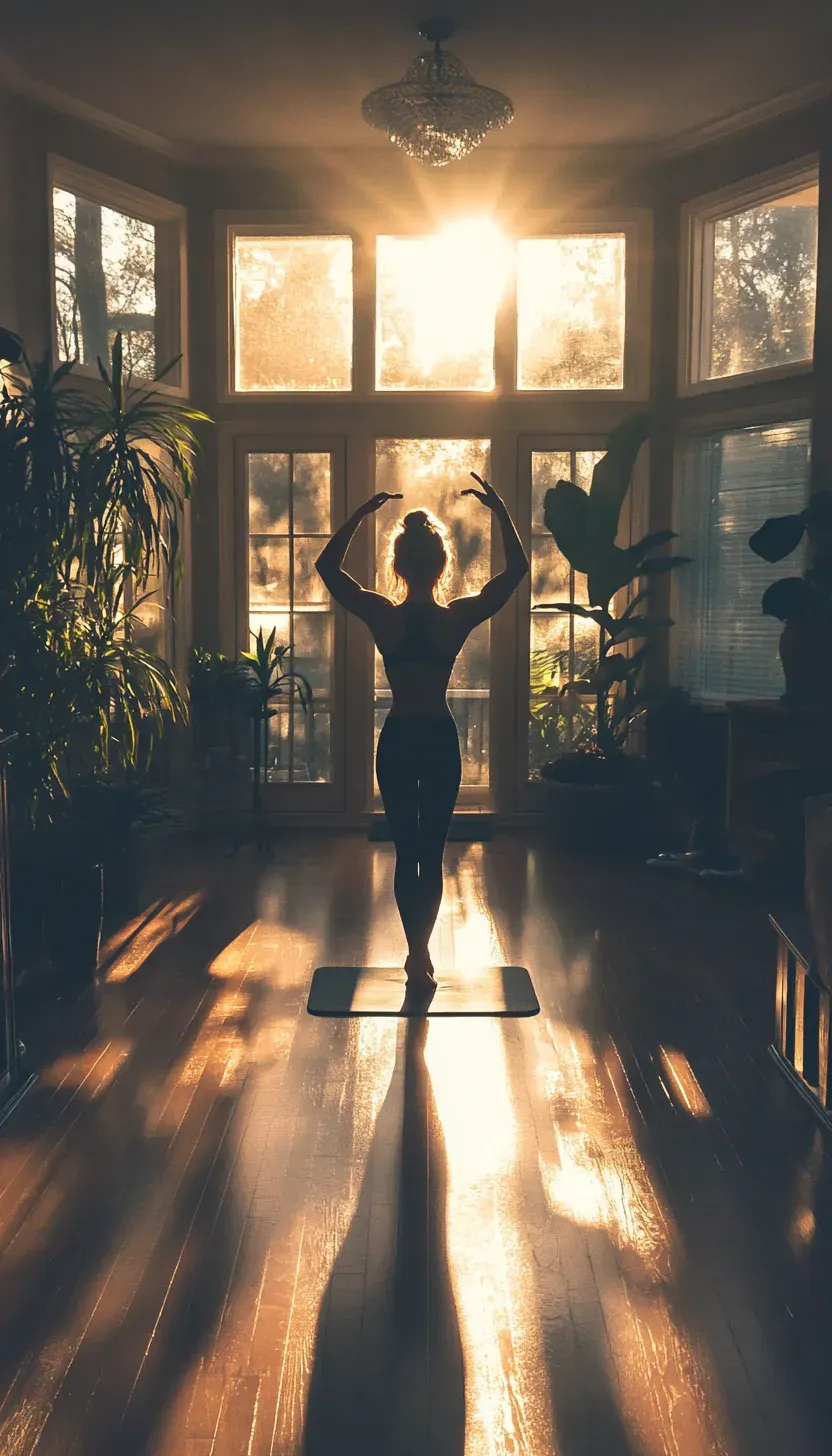Dive Deeper Into The Power Of Patience Through Yoga
Table of Contents
- Introduction
- Patience As A Prerequisite For Mindfulness
- Mental Endurance Through Extended Poses
- Enhancing Mind-Body Connection With Breath Awareness
- Overcoming Impatience Challenges In Practice
- Embracing Stillness As A Practice Of Patience
- Cultivating Lasting Patience Through Yoga
Imagine a world where the rush and chaos of daily life could be tempered by the tranquillity and resilience born from mindful movement. This is not merely a utopian dream but an accessible reality through the transformative practice of yoga. At its core, yoga offers more than physical flexibility or strength; it is a profound journey towards mental endurance and mindfulness.
It invites us to pause, breathe, and embrace stillness amidst life's turbulence. In particular, the power of patience cultivated in yoga can fundamentally reshape our interactions with the world empowering us to respond rather than react, and to persevere instead of giving up.
In each pose held during a yoga session, patience is both tested and refined. As you stretch deeply into a posture that challenges your limits, you're doing more than working your muscles you are training your mind to stay present and composed under pressure.
This deliberate cultivation of patience acts as a laboratory for personal growth, teaching individuals not only to endure but also to thrive amid adversity. The centuries-old wisdom embedded in these poses serves as a powerful reminder: patience is not about passive waiting; it’s an active pursuit that fortifies our mind-body connection.
Yoga provides the tools needed to navigate this high-pressure modern world with grace and composure—tools designed to embed patience deep within our daily lives. Whether you’re looking for stress relief or striving for greater mindfulness, stepping onto your mat could be your first step towards tapping into this timeless source of inner strength.
Join us as we delve deeper into how yoga nurtures patience and transforms potential obstacles into opportunities for growth, offering lasting benefits far beyond the mat. Are you ready to embark on this journey toward profound self-discovery?
Patience As A Prerequisite For Mindfulness
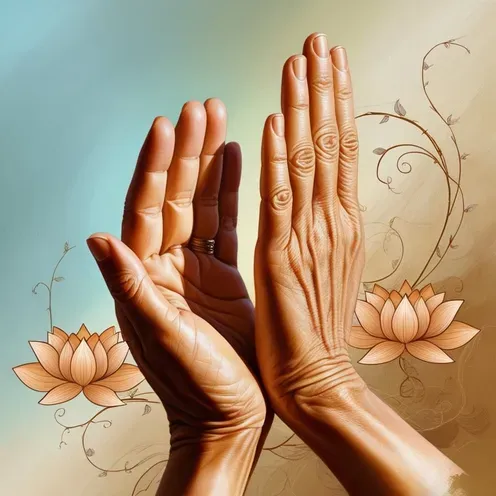
Practicing patience in yoga poses teaches us the invaluable skill of staying calm and focused, despite any challenges we may encounter. When you're holding a Warrior II position, feeling the subtle burn trailing from your thighs to your arms, it’s tempting to want to break free.
However, learning to settle into that discomfort to breathe through it rather than rush through trains the mind to be present. It cultivates an inner tranquillity where mental turbulence once existed. As this patience develops, we can more effectively manage life’s curveballs with grace and consistency, maintaining a clear head even amid chaos.
This resilience that blossoms through yoga extends beyond the mat. Envision yourself stuck in traffic or confronted by work-related stress; the patience nurtured during those long-held warrior poses transforms into an emotional buffer, providing fortitude and groundedness.
It's this ability to stay composed and maintain our focus that diminishes reactive tendencies and heightens emotional stability. By fostering such control over our impulses and emotions, we become better equipped not just to survive life's challenges but to thrive within them.
Embracing patience in yoga also leads to a greater appreciation of the journey itself rather than becoming fixated on the destination. Instead of obsessing over mastering Crow Pose or achieving the perfect Handstand immediately, you start savouring each incremental step the nuances of aligning your body correctly, and the incremental build-up of strength and balance.
This shift in perception is profoundly enriching: it's about celebrating progress as an ongoing continuum rather than chasing after a fleeting milestone. Through this lens of patient mindfulness, each moment becomes valued not just for where it leads but for its intrinsic worth here and now.
By practicing patience in yoga, we discover that every pose holds wisdom not just at its apex but during every stage of execution. The lessons learned in lingering discomfort extend far beyond physical boundaries and permeate all aspects of our lives as richer experiences full of resilience and mindfulness emerge organically.
Mental Endurance Through Extended Poses
One of the most profound lessons yoga teaches is how to build mental endurance by holding poses for extended periods. Unlike cardiovascular activities that usually rely on continuous movement, yoga challenges you to find stillness within dynamic postures. This practice requires immense focus and steadfastness, pushing you beyond your comfort zone into a realm where true growth occurs.
As you maintain these positions, your mind learns to withstand the initial urge to give up, thereby fostering an inner resilience that translates seamlessly into everyday life situations.

Consider poses like Warrior II (Virabhadrasana II) or Tree Pose (Vrksasana), which demand both physical strength and mental vigilance. The moment discomfort arises in these postures, it's natural to want to release the tension immediately.
However, by consciously deciding to remain in the pose and breathe through the discomfort, you cultivate a grounded sense of composure and stamina. This isn't just about enduring physical strain; it’s a training ground for remaining calm when deadlines loom large at work or personal conflicts erupt in family life.
Extended holds in challenging poses like Plank or Chair Pose (Utkatasana) can be particularly beneficial for developing mental toughness. By rooting yourself deeply into these demanding asanas, you're not only strengthening muscles but also teaching your brain how to stay calm under pressure.
The process involves recognizing negative thoughts ("I can't hold this any longer") and transforming them into empowering affirmations ("I am strong enough to overcome this challenge"). Such shifts in mindset are invaluable tools that bolster emotional stability and mental fortitude.
Through consistent practice, you'll find that what once seemed intolerable becomes manageable—even surmountable. Whether navigating difficult conversations or dealing with stressful environments, the patience and mental endurance cultivated on the mat act as powerful allies it.
Thus, by embracing prolonged holds in yoga poses, you’re setting the stage for a balanced life characterized by unwavering focus and a resilient spirit.
Enhancing Mind-Body Connection With Breath Awareness
Maintaining patience in yoga poses profoundly enhances awareness of breath patterns, a fundamental element that promotes better alignment between body movements and breathing rhythm.
When you hold a pose, your breath becomes your anchor; its steady flow serves as a metronome that guides each movement to synchronize perfectly with each inhalation and exhalation.
This deliberate focus on breath not only fosters physical balance but also cultivates an inner calmness, teaching you the art of being present. For example, in poses like Warrior II or Tree Pose, tuning into your breath helps you maintain stability while simultaneously cultivating mindfulness.
The importance of synchronizing breath with movement cannot be overstated. It transforms the yoga practice from a mere physical exercise into a deeply meditative experience where mind and body work in unison.
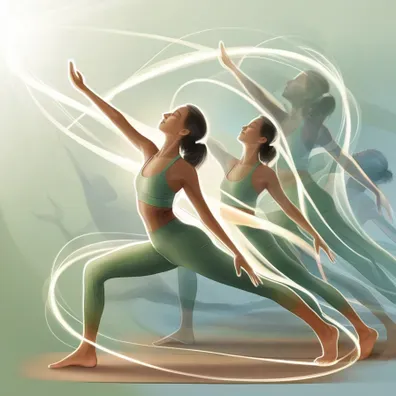
The fluid transition between poses during Vinyasa sequences exemplifies this harmony each pose flows seamlessly into the next, coordinated by the breath. By paying close attention to how each inhalation expands your body and each exhalation releases tension, you create a smooth and meaningful movement flow that reflects an unwavering inner state of calm and focus.
Incorporating breath work increases mindfulness by anchoring attention to the present moment while navigating challenging postures. Techniques like Ujjayi (victorious) breath a slow, controlled breathing method are incredibly effective for sustaining concentration during tough holds like Plank or Dolphin Pose.
This mindful breathing serves as a reminder to be patient with yourself; it signals when to ease into discomfort gently rather than forcing progress prematurely. Through conscious respiration, practitioners can turn potentially frustrating experiences into opportunities for growth and self-awareness, ultimately translating these lessons off the mat for more resilient and thoughtful daily living.
By nurturing a keen sense of patience through controlled breathing practices in yoga, you pave the way for deeper self-discovery and enhanced mental tranquillity. As the body yields harmoniously to its natural rhythms guided by purposeful breaths, your practice evolves into an immersive journey where every challenge is met with grace and perseverance.
Overcoming Impatience Challenges In Practice
One of the most pervasive obstacles in yoga practice is impatience, often manifesting as restlessness or self-criticism. It’s common to find yourself mid-pose, your mind racing with thoughts of failure or frustration. These internal disruptions can detract from the serenity and focus that yoga aims to cultivate.
The key to overcoming such challenges lies not in eradicating these feelings but in acknowledging them without judgment and gently guiding your focus back to the present moment.
To begin, it’s crucial to adopt gentle reminders that perfection is not the goal progress is. Every time you step onto your mat, recognize that it's a part of a journey rather than a destination.
Embracing imperfection allows you to celebrate minor improvements, which encourages persistence and fosters a positive mindset. Imagine each pose as an opportunity for growth rather than a test of strength or flexibility; this shift in thinking alone can significantly diminish impatience.
Incorporating visualization techniques and mantra repetition into your practice can also prove invaluable. Visualization helps create mental imagery of successfully holding a pose with tranquillity and ease, fostering patience by mentally rehearsing calmness under pressure.
On the other hand, repeating mantras such as "I am patient" or "Every breath brings progress" can redirect attention away from discomfort or negative thoughts.
These practices forge a mental pathway towards patience by reinforcing positive affirmations during moments of strain.
Practical strategies like setting realistic expectations and celebrating small victories make all the difference too. Rather than aiming for flawless execution, acknowledge any effort put forth as commendable on its merit.
Taking these steps allows not only for the growth of patience within yoga but also empowers this virtue to permeate other aspects of life, proving that overcoming impatience is both possible and profoundly transformative through mindful application on the yoga mat.
Embracing Stillness As A Practice Of Patience
Finding stillness within dynamic movements is an essential element of yoga that fosters inner calmness and tranquillity, even amidst physical exertion. This practice teaches us to anchor ourselves in the moment, to find serenity in the flow rather than just at the rest points.
Imagine holding a challenging pose like Warrior II; despite the strength it calls for, there is an invitation to find a quietude within. This internal stillness helps cultivate patience by allowing the mind to be restful while the body actively engages, creating a harmonious balance between effort and ease.
Incorporating moments of pause into your yoga routine can help develop mental fortitude and deepen your threshold for patience. During your practice, you might choose to linger in poses like Child's Pose or Tadasana (Mountain Pose), using these pauses to reset both mentally and physically.

Such instances are not about doing nothing but about consciously choosing presence over progression. Think of it like a musical rest - it's not silence but rather an integral part of a rhythmic sequence that adds meaning and depth to your overall experience. By making space for these purposeful pauses, you enhance your ability to stay composed amid intensity and foster resilience.
Embracing silence during your practice is another pivotal way to develop patience deeply connected with mind-body awareness. In our fast-paced world filled with constant stimuli, moments of quiet can act as powerful tools for introspection and self-awareness.
When you allow yourself to listen attentively to internal cues and sensations without judgment or distraction, you forge a profound connection between mind, body, and spirit. Whether it's through Savasana (corpse pose) at the end of your session or simply by practising mindful breathing during transitions, these moments of silence become growth opportunities, inviting calmness and fostering enduring patience.
By embracing stillness both in movement and in pause, yoga invites practitioners to transform their approach toward life's challenges with grace and composure. As you nurture this serene equilibrium on the mat, you'll find it naturally extends beyond practice into everyday interactions and situations where patience becomes a virtue and a way of being.
Cultivating Lasting Patience Through Yoga
As we journey through yoga, we are not merely engaging in physical postures but nurturing a deep-seated value that transcends our mat's patience. This voyage into patience is marked by transformative experiences, teaching us to remain calm, collected, and resilient in the face of life's myriad challenges.
Each sustained posture and every mindful breath becomes an opportunity to reframe our mindset from impatience to perseverance, reflecting the mantra that true growth lies not at the destination but within the journey itself.
Embracing patience through yoga empowers us to develop mental endurance and strengthen the sacred mind-body connection. It propels us towards a more mindful existence where stress diminishes and inner peace prevails.
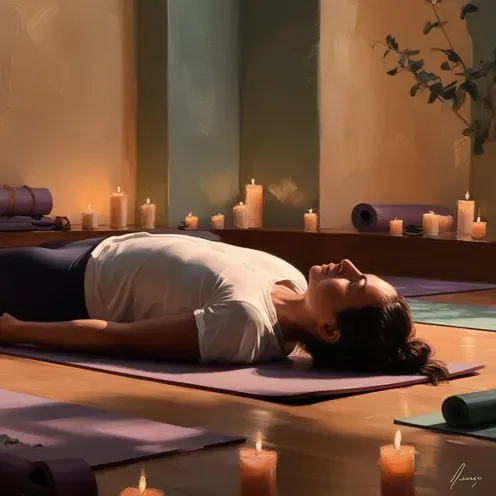
For those who seek change and believe in fostering deeper mindfulness, it is crucial now more than ever to integrate these practices into your daily life. So, roll out your mat with intention today; embrace every challenging pose as a lesson in patience and let this powerful virtue reverberate through all facets of your life. The tranquillity you find within will be the cornerstone of harmony both on and off the mat.
People Also Asked
Q1: How can yoga help improve patience?
A1: Yoga improves patience by teaching practitioners to stay present and composed during challenging poses, thereby fostering mental endurance and mindfulness.
Q2: What are the benefits of holding yoga poses for extended periods?
A2: Holding poses for extended periods builds mental endurance, strengthens muscles, and enhances focus and resilience.
Q3: How does breath awareness enhance the yoga practice?
A3: Breath awareness synchronizes body movements with breathing, promoting better physical balance, inner calmness, and mindfulness.
Q4: What are some common challenges in practising patience through yoga?
A4: Common challenges include restlessness, self-criticism, and the urge to give up during difficult poses.
Q5: How can visualization techniques help overcome impatience in yoga?
A5: Visualization helps by creating mental imagery of successfully holding a pose, fostering calmness, and reinforcing positive affirmations.
Q6: Why is embracing stillness important in yoga?
A6: Embracing stillness helps anchor the mind in the present moment, fostering inner calmness and patience even during physical exertion.
Q7: How does yoga help manage stress and anxiety?
A7: Yoga manages stress and anxiety by promoting mindfulness, enhancing breath control, and fostering a calm and composed mindset.
Q8: Can beginners benefit from practising patience in yoga?
A8: Yes, beginners can benefit greatly as practising patience helps them progress steadily, build resilience, and enjoy the journey of yoga.
Q9: What role does mental endurance play in daily life outside of yoga?
A9: Mental endurance cultivated through yoga helps manage everyday stress, enhances emotional stability, and improves focus and resilience in challenging situations.
Q10: How often should I practice yoga to cultivate patience?
A10: Consistent practice, ideally several times a week, helps cultivate patience more effectively. Regular practice reinforces the mental and physical benefits of yoga.


